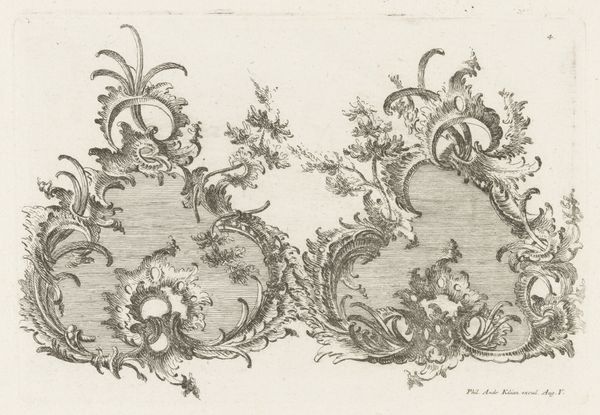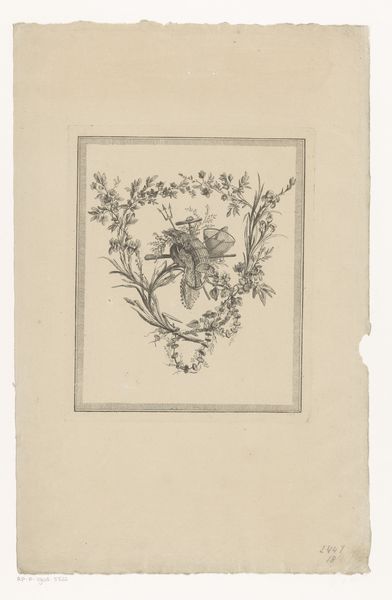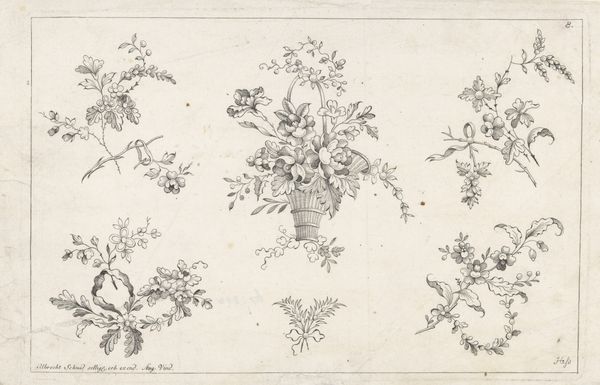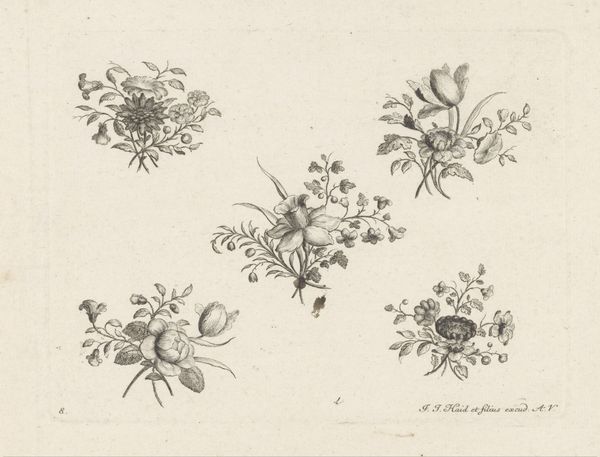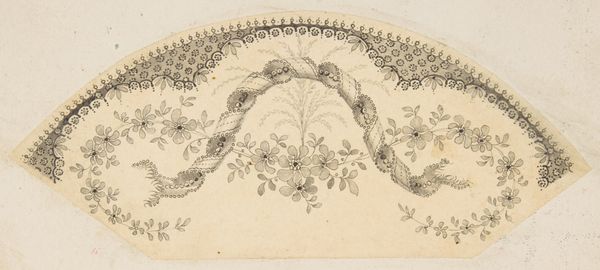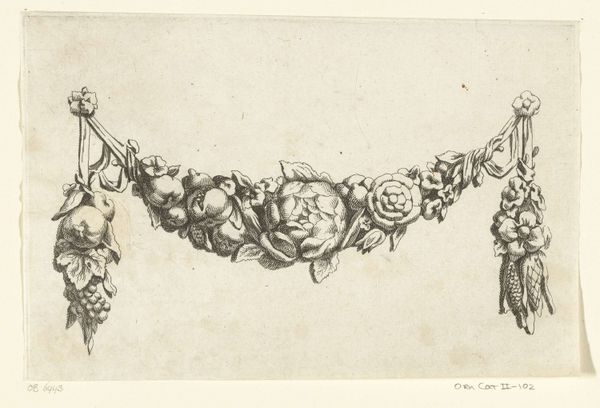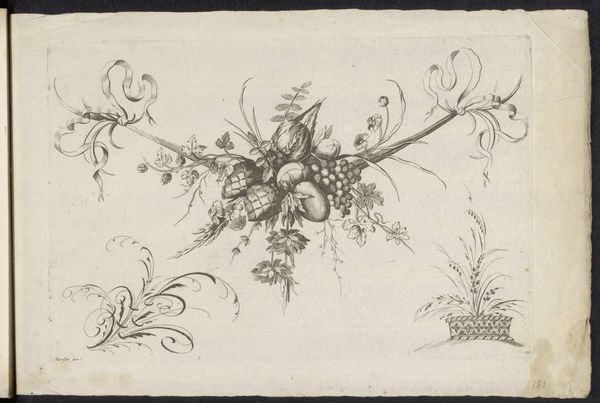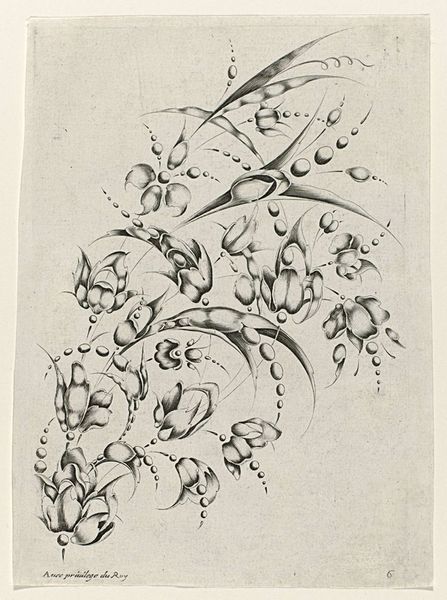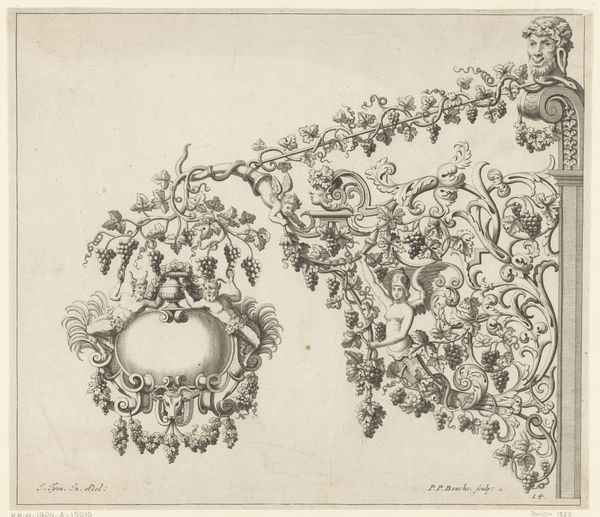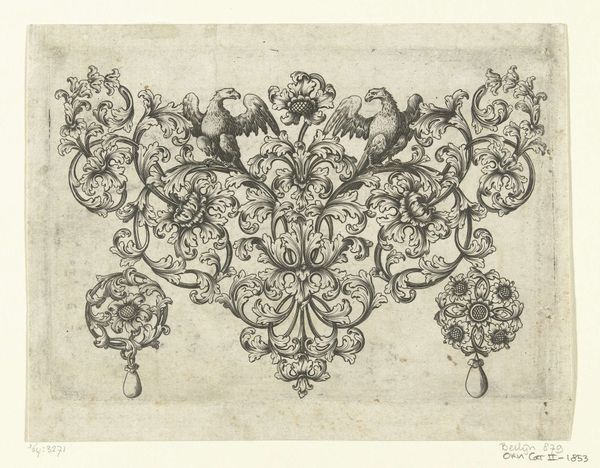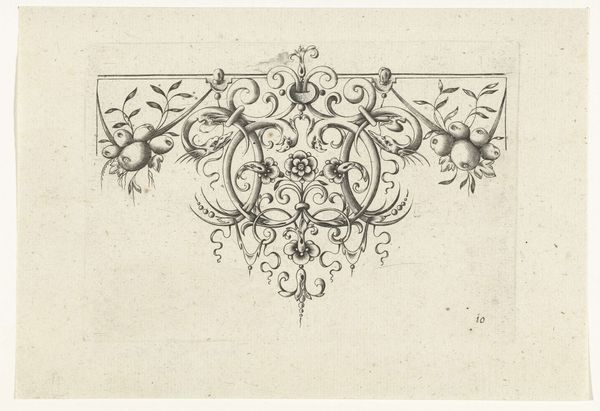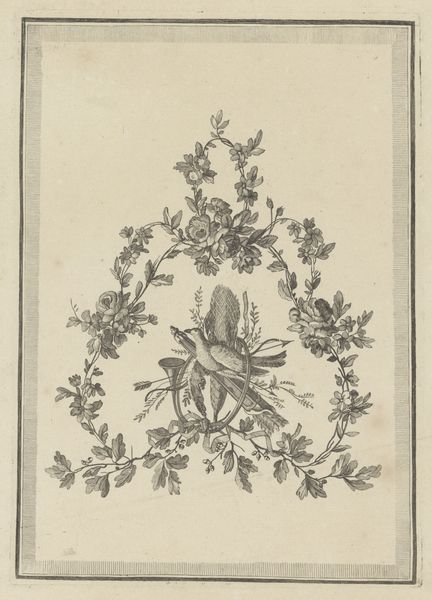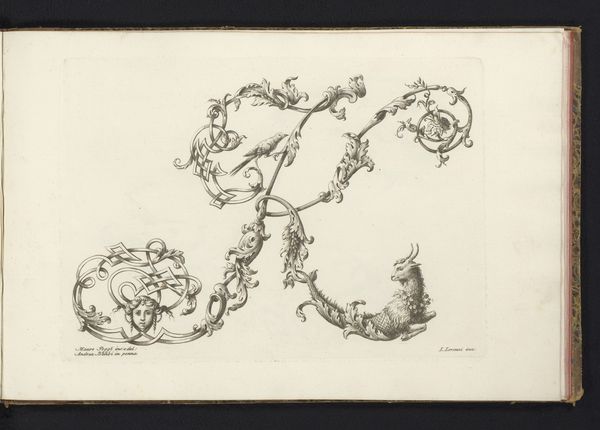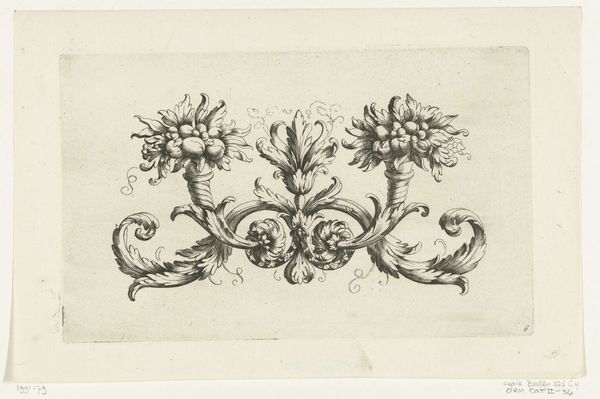
drawing, print, paper, ink, engraving
#
drawing
#
light pencil work
#
pen drawing
# print
#
pen sketch
#
old engraving style
#
paper
#
personal sketchbook
#
ink
#
ink drawing experimentation
#
pen-ink sketch
#
pen work
#
sketchbook drawing
#
decorative-art
#
sketchbook art
#
engraving
#
rococo
Dimensions: height 244 mm, width 321 mm
Copyright: Rijks Museum: Open Domain
Curator: Here we have Jean Jacques Bachelier’s “Ontwerpen voor bloemschikkingen met lier,” or “Designs for Floral Arrangements with Lyre,” dating back to 1760. It is executed with print, ink, and engraving on paper. Editor: My first impression is of delicate precision. The linework creates an ethereal lightness. It feels almost like a botanical study crossed with musical whimsy. Curator: Indeed, Bachelier's drawing speaks to the Rococo period’s obsession with both natural forms and ornamental design. Floral arrangements, then as now, were potent symbols. Think of their deployment in depictions of wealth, gendered spaces, and celebrations. Editor: It’s fascinating to consider the labor involved in both the creation of the arrangements and in the meticulous engraving of the design. How long would it take to carve something so intricate into a plate, then reproduce it repeatedly on paper? There's a tangible relationship between material production and artistic skill on display. Curator: Absolutely, and beyond the skilled labor, we might also consider what these types of arrangements and their associated imagery meant to those within Bachelier’s social milieu. For the upper classes, these detailed images reinforced an understanding of status, as they could both afford floral abundance and commissioned works celebrating this opulence. Editor: To me, the drawing suggests a dialogue between fine art and craft. The drawing’s practical application, presumably to inspire the work of florists or other artisans, disrupts established hierarchies. I think we often separate the intellectual conceiving from the manual creation but here the two are bound. Curator: You make an excellent point. We must remember that aesthetics during the Rococo period were not detached from social and economic realities. In fact, objects like this helped to reinforce these very power dynamics. The flowers aren't just pretty, they speak to social standing and artistic purpose. Editor: Reflecting on Bachelier's work through this lens, I now see these floral arrangements less as simply decorative and more as products of skilled labor embedded with symbolic significance. Curator: Precisely. Analyzing this drawing enables us to acknowledge and understand better not just artistry, but also the intersecting social, political, and historical dialogues embedded in seemingly innocuous artworks.
Comments
No comments
Be the first to comment and join the conversation on the ultimate creative platform.
